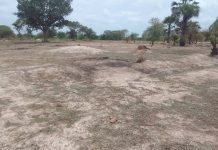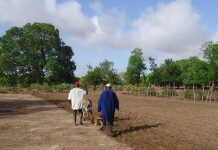By Luke O’Brien As talks in Vienna, Austria, to curb Iran’s nuclear programme ended with a deal earlier this month, most people around the world let out a collective sigh of relief. Surely any agreement that limits the spread of nuclear weapons is to be celebrated, especially in the troubled Middle East. However the potential significance of this deal is more complicated and deserves an in depth look. The agreement struck between the Iranian government and the five permanent members of the United Nations Security Council (the U.S., UK, France, China, Russia) plus Germany, known as the P5+1 powers, took 21 months of negotiations to achieve including a 17-day final session. These marathon talks illustrate not only the gulf between the Middle Eastern nation and international powers, with the U.S. very much leading negotiations for the P5+1, but also the determination to succeed. Key to the negotiations’ progress were economic sanctions placed on Iran as a response to its nuclear program, which have been a significant drag on growth. For example, U.S. credit ratings agency Fitch Ratings said the key oil industry is generating exports at about half the rate it was before the measures were put in place. This illustrates the difficult position the country faces, and why it was so keen to reach a deal. On the other side, the U.S., UK and German governments in particular were eager to find an agreement before Iran reached a point in its development of nuclear technology that could provoke a military confrontation. Israel, Saudi Arabia, the Gulf States and the U.S. itself had all discussed the possibility of strikes on known nuclear sites, with unpredictable results. In a worst-case scenario, there was the prospect of a nuclear arms race between Middle East states. In addition, Russia, China and France had made it clear that they would not support the economic sanctions on Iran indefinitely if there was not credible movement towards a deal led by the U.S. In their view, while a nuclear-armed Iran is not to be celebrated there was no definitive proof that this was the ultimate aim of the government in Tehran. The Iranians had consistently claimed they were merely developing nuclear power for civilian uses, and for these countries the financial gains to be made from doing business with Iran were almost accorded the same weight as the security concerns. Taken together, these factors show why the seven countries worked so long and so hard to reach a deal. However, the agreement must be robust and even-handed enough to avoid unilateral action by rival Middle Eastern countries and ensure it is supported by domestic politicians in both Iran and the U.S. The key points of the deal, which will remain in place for 10 years, are as follows: – Iran will cut the number of centrifuges used to enrich uranium (key to building a nuclear bomb) from 20,000 to 5,060. This will still allow it to develop civilian nuclear power. – The country’s uranium stockpile will be reduced by 98% to 300 kilograms and the enrichment level will be limited to 3.67%. 90% enrichment is needed to build a bomb. In addition, production of plutonium (which can also be used to build a bomb) will be curbed. – Inspectors from the International Atomic Energy Agency (IAEA), which governs nuclear power and checks weapons worldwide, will continuously monitor Iran. The government has agreed to allow inspectors access to any site they consider suspicious. However, the IAEA will have to request access to military sites and could be delayed. Any disputes will be sent to an arbitration panel for resolution. – A joint commission consisting of the P5+1 nations, Iran, and the European Union (EU) will monitor compliance with the agreement. If they cannot resolve an issue then the UN Security Council will have the final say. – Economic sanctions will be lifted after the IAEA confirms Iran is following the terms of the agreement. A ban on the sale of weapons to Iran will remain in place for 5 years and an embargo on importing ballistic missile technology will stay for 8 years, although could be removed early if the IAEA declares itself satisfied that the nuclear programme is only for peaceful purposes. – The final major point is that if Iran violates any part of the agreement, sanctions will automatically be reapplied for 10 years with the possibility of a 5-year extension. Taken together, the agreement is estimated to increase the time it would take Iran to develop a nuclear weapon if it were to work as hard as possible to that end to at least 1 year from 2-3 months at present. The deal has yet to be formally passed by the U.S. and Iranian governments, but is seen as likely to defeat the hardliners opposed to it in both countries. The sterner test, and unknown quantity, will be the ramifications that the deal has for Middle Eastern stability. Key powers in the region including Saudi Arabia, Israel and the Gulf States all vehemently oppose the agreement. They have long pressed for the U.S. to take military action against Iran as their preferred option to halt development of a weapon, and have themselves been suspected of engaging in covert attacks against nuclear sites in the country. The resistance to a negotiated solution that allows Iran to rebuild economically is rooted in a wider regional power struggle that specifically concerns rivalry between the predominantly Shiite Iran and mostly Sunni Saudis and Gulf Arabs. Bitter proxy battles are currently being waged in Yemen, Syria, Iraq, Lebanon and other trouble spots. The fear is that if the Iranian government re-enters global oil market, much of the cash earned will go to supporting their favoured sides in these conflicts. They also see Iranian crude entering the market as having a depressive effect on already low oil prices, thereby hurting their economies. Meanwhile, Iran will benefit greatly no matter the impact on price as its output is starting from such a low position. Israel is also heavily invested in regional conflicts, although without the Sunni vs Shiite component. Their concerns stem mainly from worries about the situation in Lebanon and Gaza, where Iran finances and arms the militant Hezbollah group which is heavily antagonistic to Israeli interests. Additionally, there is a widespread fear in the country that if Iran were to develop a nuclear weapon it could launch an unprovoked attack on Israel, and that the stronger economic position it will be in after this deal could embolden it. Inflammatory comments by political and religious leaders about wiping Israel off the map and regular proclamations of ‘Death to Israel’ have not helped Iranian protestations that it has no such intent, and have contributed to fears about the predictability of its governments. So what has all this achieved? Assuming that the deal is passed by the U.S. and Iranian governments and adhered to by both sides, it seems that the prospect of a Middle Eastern nuclear arms race is off the table – for now. It also makes a direct military confrontation with Iran far less likely, a surely welcome development for most people across the world. However, it also seems likely that the Saudis, Gulf States and Israel will all step up their efforts against Iranian-backed entities across the region. Iran will also be in a much better position to do the same on its side, with predictably explosive results. Economically, Iran will likely be the biggest winner from the deal as it makes up for lost ground under the sanctions regime. Companies from around the globe are also circling, hoping to cash in on the re-opened economy with big investments. Oil prices will also probably take a hit as more crude flows into the market, a boon to net-importer nations like The Gambia and major European economies but a blow for oil producers such as Nigeria and Venezuela. In these countries, the costs of oil production are so high and the governments so reliant on its export for revenues that they are already creaking under the pressure of sub-100 U.S. dollar-a-barrel prices. Thus, the effects of this deal will be felt around the world in both political and economic terms. The results may be as yet unknown, but events will be watched with interest as they unfold. Luke O’Brien is a researcher who was at Foroyaa for a fortnight.]]>
The Iran Nuclear Deal – What You Need to Know A Break Down of the Global Implications
Facebook Notice for EU!
You need to login to view and post FB Comments!




















